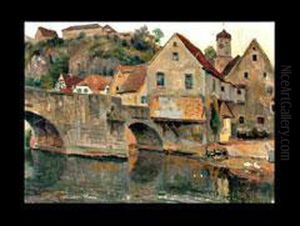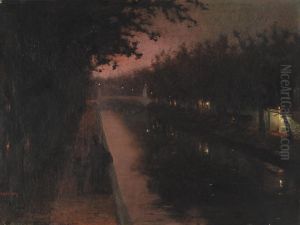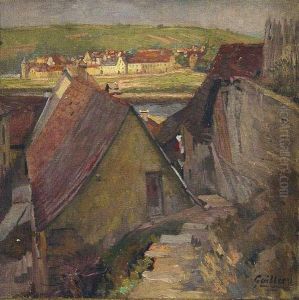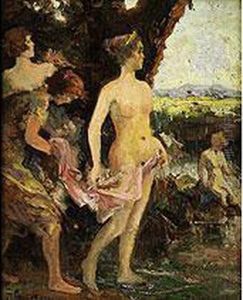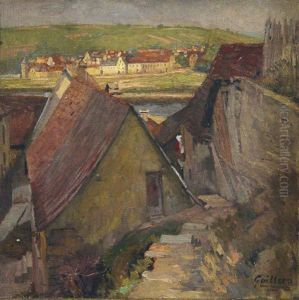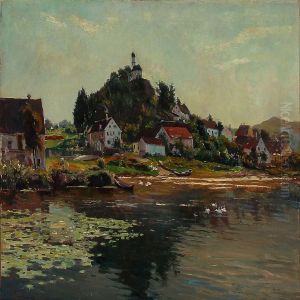Franz Paul Guillery Paintings
Franz Paul Guillery was a German architect, watercolorist, and university professor. His contributions to the field of architecture and his work as an educator had a notable impact during his time.
Guillery was born on May 24, 1862, in Düsseldorf, Germany. He was part of the late 19th century and early 20th-century architectural scene when there was a transition from historicist styles to more modernist approaches in architecture. Guillery studied at the Berlin Building Academy (Bauakademie) and was influenced by the prevailing architectural styles and academic thought of the period.
After completing his studies, Guillery worked as an architect and became involved in various construction projects. His works included both residential and public buildings, which often reflected the eclectic styles of the era, combining elements from different historical periods and sometimes incorporating emerging modernist trends.
Aside from his work as an architect, Guillery also made significant contributions to the academic world. He served as a professor at the Berlin Building Academy, where he taught a generation of architects, imparting his knowledge and understanding of architectural principles. His teachings and mentorship helped shape the careers of many young architects who would go on to define the architectural landscape of the 20th century.
Guillery was also known for his watercolor paintings, which depicted architectural landscapes and urban scenes. These works were appreciated for their attention to detail and their ability to capture the atmosphere of the subjects he portrayed. Guillery's artistic talents complemented his architectural work and provided a unique perspective on the built environment of his time.
He passed away on February 20, 1933, in Berlin. Throughout his career, Franz Paul Guillery left a lasting legacy as an architect, educator, and artist, contributing to the cultural and architectural heritage of Germany.

